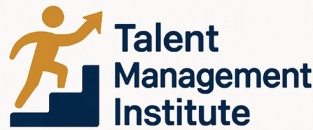
Understanding Employee Assessment Tools
Gaining Insights into Employee Capabilities
Understanding employee assessment tools is pivotal for organizations aiming to optimize their workforce's skills and performance. These tools are designed to provide valuable insights into employee strengths and weaknesses, helping management teams make informed decisions about employee development, training, and performance evaluation.
Employee assessments aren't just about evaluating current performance. They also offer avenues for pre employment screening, allowing companies to ensure they hire talent aligned with their organizational goals. These assessment methods range from traditional skills tests to advanced behavioral evaluations and 360 degree feedback systems.
When integrated effectively, assessment tools can play a crucial role in employee engagement, succession planning, and identifying areas for improvement. As you explore the possibilities of unlocking employee potential, it's essential to recognize the diverse types of assessments available and how they align with your team’s objectives.
However, navigating the complexities of assessments can be challenging, particularly when dealing with diverse employee types. To understand the nuances, you might find it useful to delve deeper into expert analyses of challenging employee dynamics. One resource that discusses this in context is found at the Talent Management Institute's comprehensive guide on complicated employee types.
Using assessment tools is not a one-size-fits-all approach. Organizations must tailor these tools to their specific needs, ensuring they cater to both pre hire assessments and long-term employee development.
Benefits of Implementing Assessment Tools
The Advantages of Implementing Employee Assessment Tools
Integrating employee assessment tools into your talent management strategy offers a multitude of benefits that can significantly enhance both individual and organizational performance. Companies seeking to optimize their workforce can reap several rewards from using such insightful tools. To begin with, assessment tools provide valuable insights into the skills and abilities of employees. They offer a structured way to evaluate strengths and weaknesses, paving the way for targeted development. With these insights, management can craft informed decisions about training and development programs aimed at areas of improvement. Moreover, using employee assessments in pre-employment or hiring processes ensures the identification of candidates who align closely with job requirements and company culture. Conducting pre-hire assessments can lead to better hiring decisions, minimizing the risk of turnover and enhancing team dynamics. These tools also bolster employee engagement by incorporating regular feedback and performance evaluation into everyday processes. Receiving feedback, whether through performance tests or 360-degree feedback, allows employees to understand their progress and address problem-solving challenges head-on. Additionally, assessment tools aid in succession planning. By establishing a clear profile of existing employees, companies can better handle career pathing and identify potential leaders for future roles. These tools thus support a more strategic approach to employee development, positioning the organization for long-term success. The benefits of assessment tools are multi-faceted, playing a crucial role in the overall management process and contributing to a productive and motivated workforce. As organizations continue to evolve, leveraging these tools will remain key to maintaining a competitive edge in talent management.Challenges in Using Assessment Tools
Navigating the Hurdles of Assessment Implementation
The introduction of employee assessment tools in any organization does not come without its share of challenges. Despite the immense benefits and insightful feedback they promise, a few obstacles need to be addressed for smooth integration and effective results. Firstly, employee assessments can sometimes lead to resistance from team members, especially if they feel scrutinized or evaluated continuously. This perception may affect employee engagement and productivity adversely. Open communication about the purpose and benefits of these tools is crucial to alleviate concerns. Educating employees about how assessments contribute to their professional growth and skill development can foster a positive environment. Additionally, the accuracy and relevance of the assessment tools used are critical. Choosing an inappropriate tool can result in misguided insights about employee performance and skills. Organizations must take careful consideration to ensure the alignment between the assessment tools and their workforce's specific needs and job roles. Another significant challenge is integrating the outcomes of assessments into existing performance management and employee development systems. Without a seamless integration process, the insights gained can remain unutilized, rendering the entire effort ineffective. Continual evaluation of process compatibility and technological infrastructure is necessary for successful tool implementation. Lastly, organizations may face difficulties associated with data privacy and ethical considerations. It is essential to handle employee performance data with confidentiality and ensure compliance with legal standards to build trust and transparency. For professionals seeking to streamline these challenges and enhance team dynamics, focusing on continuous learning can drive sustained improvement and innovation.Choosing the Right Assessment Tools
Key Factors in Selecting the Right Tools
Choosing the right employee assessment tools is a critical step in enhancing your talent management strategy. The right tools can offer valuable insights into employee performance, skills, and areas for improvement. However, the selection process can be daunting given the plethora of options available. Here are some key factors to consider:
- Purpose and Goals: Clearly define what you aim to achieve with the assessment tools. Are you focusing on pre-employment tests, performance evaluation, or employee development? Understanding your objectives will guide your selection process.
- Compatibility with Existing Systems: Ensure that the tools you choose can integrate seamlessly with your current HR systems. This will facilitate a smoother assessment process and enhance data management.
- Ease of Use: Opt for tools that are user-friendly for both employees and managers. Complex tools can lead to low engagement and inaccurate assessments.
- Comprehensive Feedback: The tools should provide detailed feedback on employee strengths, weaknesses, and areas for improvement. This is crucial for informed decisions regarding training and development.
- Scalability: Consider whether the tools can grow with your organization. As your team expands, the tools should be able to accommodate more users and data.
- Cost-effectiveness: Evaluate the cost of the tools in relation to the benefits they provide. While investing in quality tools is important, ensure they offer a good return on investment.
Evaluating the Effectiveness of Tools
Once you have shortlisted potential tools, it’s essential to evaluate their effectiveness. Look for tools that have been validated through research and have a proven track record of success. Seek feedback from other organizations that have used these tools to gain insights into their performance and reliability.
Remember, the right assessment tools not only enhance employee engagement but also contribute to better hiring decisions and succession planning. By carefully selecting and implementing the right tools, you can unlock the full potential of your workforce.
Best Practices for Effective Implementation
Maximizing the Impact of Employee Assessments
Implementing employee assessment tools effectively requires meticulous planning and strategic execution. Organizations aiming to harness the full power of employee assessments should focus on several best practices that can elevate the assessment process and foster meaningful employee development.- Define Clear Objectives: Start by identifying the goals you wish to achieve with the assessments. Whether it’s enhancing employee performance, identifying training needs, or informing succession planning, a clear set of objectives will guide the selection and application of appropriate tools.
- Integrate with Development Plans: Use the insights from assessments to craft personalized development and training plans for employees. Pinpointing areas for improvement and strengths can bridge skill gaps and promote career growth.
- Encourage Continuous Feedback: Implement a feedback mechanism that goes beyond annual reviews. Continuous feedback allows employees to make informed decisions and adapt swiftly to changes, nurturing a culture of engagement and open communication.
- Ensure Ethical and Fair Use: Use assessments that are transparent, valid, and unbiased. Employees should trust the assessment process and be aware of its components and purpose to minimize resistance.
- Inclusive Evaluation Methods: Consider including 360-degree feedback in the assessment approach to gain comprehensive insights into employee performance and interpersonal skills.
- Emphasize Skill Development: While assessments help in making pre-employment and hiring decisions, they should also focus on continuous employee development. Translate assessment results into actionable development plans that prioritize both professional and personal growth.
- Leverage Technology: Utilize advanced assessment tools and platforms that offer robust data analytics and reporting capabilities. These tools provide valuable insights into employee strengths and weaknesses, aiding in enhancing overall organizational performance.








